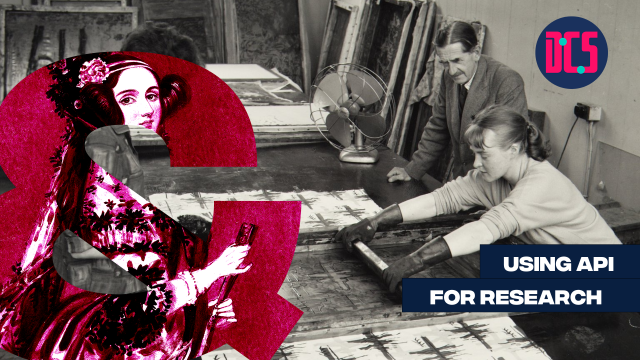Silent Disco: Computer Vision for the Humanities: An Introduction to Deep Learning for Image Classification

Online
This two-part tutorial from Programming Historian introduces deep-learning-based computer vision techniques tailored for humanities research. Using the fastai Python library and historical newspaper imagery (advertisements and photographs), you'll build, train, and evaluate image classification models, exploring critical challenges from data preparation to performance metrics.
You can explore the first half here and the second half here.
The workshop will take place via Microsoft Teams in a ‘Silent Disco’ format. Participants will work on the tutorial at their own pace. The facilitator will be available via Teams Chat to reply to any questions that arise during the workshop, and to help with installation, troubleshooting or other issues.
This course will be taught by Martin Disley
After taking part in this event, you may decide that you need some further help in applying what you have learnt to your research. If so, you can book a Data Surgery meeting with one of our training fellows.
More details about Data Surgeries.
Those who have registered to take part will receive an email with full details on how to get ready for this course.
If you’re new to this training event format, or to CDCS training events in general, read more on what to expect from CDCS training. Here you will also find details of our cancellation and no-show policy, which applies to this event.
Level
This workshop requires some prior knowledge. Basic programming in Python (variables, data types, library usage) is required, together with experience in using Jupyter Notebooks (running cells, navigating notebooks). If you want to familiarise yourself with working with Python and notebooks, you can attend our Getting Started with Python for Research. No deep learning or computer vision background necessary—relevant libraries and steps are covered in the tutorial .
Learning Outcomes
Understand a complete deep learning pipeline for image classification, from dataset construction to model training and validation
Develop competency with performance evaluation metrics, especially in the context of imbalanced historical datasets
Gain awareness of domain-specific challenges, such as data errors from machine-predicted labels, model interpretability, bias in historical contexts, and the need for thoughtful metric selection
Skills
By attending this course, you will familiarise yourself with the following skills
Hands-on model building with fastai: loading image data, setting up data loaders, and training a convolutional neural network
Data analysis and augmentation techniques: conducting exploratory data analysis
Model evaluation and refinement: choosing and interpreting appropriate performance metrics
Explore More Training
- Digital Method of the Month: What LLMs can and cannot do
- Using Prompting Efficiently for Research
- Using API for Research
- Text Classification in Practice: From Topic Models to Transformers
Return to the Training Homepage to see other available events.












